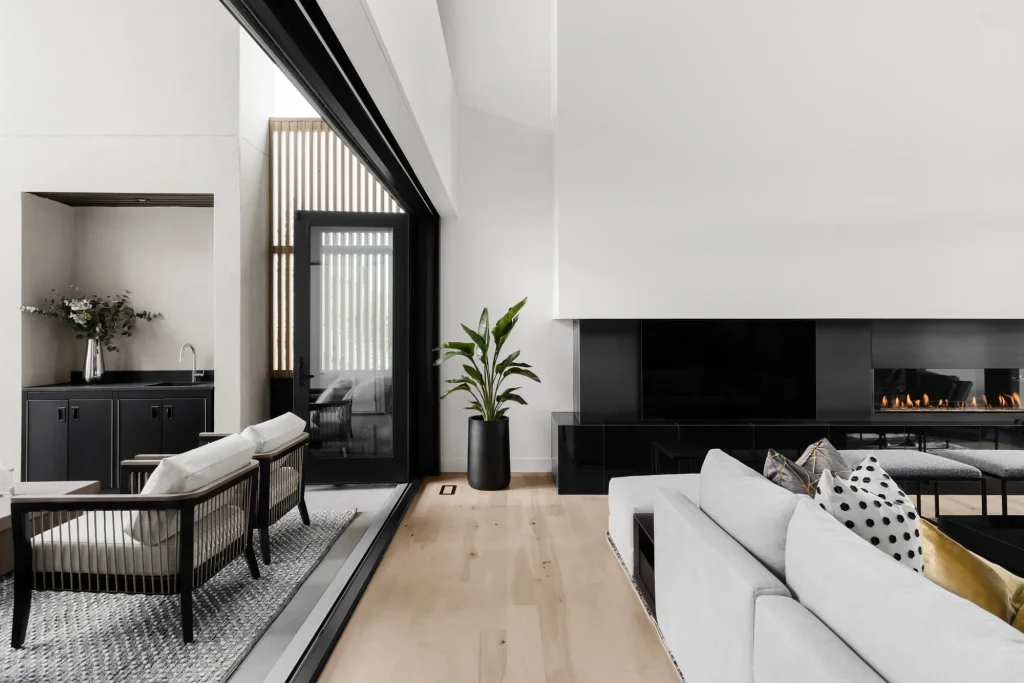Sustainable Minimalism: Practices to Reduce Clutter and Protect the Environment

The Movement Towards Sustainable Living
In today’s fast-paced world, the clutter of excessive belongings can weigh heavily on our minds and our planet. Embracing sustainable minimalism offers a solution that not only simplifies our lives but also contributes to environmental health. The adverse effects of overconsumption are becoming increasingly apparent, leading to both environmental degradation and mental clutter. Understanding how these issues intertwine can be the first step towards change.
This lifestyle emphasizes the importance of reducing waste and rethinking consumption. By simplifying our living spaces, we not only create a more peaceful home but also minimize our environmental footprint. Here are some impactful practices that embody sustainable minimalism:
- Decluttering your home with a focus on what you truly need. This could mean evaluating your clothing, furniture, and even kitchen items to determine which objects serve a meaningful purpose in your life. For example, perhaps you own ten pairs of shoes, yet only wear two regularly. Identifying those essentials can lead to significant emotional and spatial relief.
- Opting for quality over quantity in purchases. Investing in ethically produced and durable items not only supports sustainable brands but also reduces the need for frequent replacements. For instance, instead of buying several fast-fashion garments that may only last a season, consider purchasing a few timeless pieces made from sustainable materials.
- Choosing sustainable materials in everyday products. This encompasses everything from biodegradable cleaning supplies to furniture made from reclaimed wood. For example, many companies in the U.S. are now offering eco-friendly alternatives, such as bamboo toothbrushes and reusable fabric bags, which help reduce plastic waste in our oceans.
Moreover, sustainable minimalism promotes mindfulness around what we buy and how we dispose of it. The connection between consumer habits and environmental impact is profound; according to the EPA, in 2018 alone, more than 292 million tons of trash were generated in the United States. This staggering statistic highlights the necessity for a cultural shift in how we view consumerism.
As you dive deeper into this enlightening concept, you’ll discover how adopting minimalism can benefit not only your living space but also the planet. Many individuals report greater peace of mind after reducing clutter, a phenomenon linked to improved mental health. The harmony between simplicity and sustainability invites a new way of thinking, encouraging us to consume less and appreciate more. By fostering an awareness of our purchasing behaviors, we can contribute to a more sustainable future, ensuring that our environment remains healthy for generations to come.
DISCOVER MORE: Click here to learn how minimalism can elevate your life

Embracing a Simplified Lifestyle
To embark on the journey of sustainable minimalism, one must first understand the art of decluttering. This goes beyond simply tidying up; it involves a systematic approach to evaluate each item in your home. The first step is to assess your belongings and ask yourself a series of questions: Does this item serve a purpose? Do I truly love it? Am I holding onto it out of obligation or guilt? This introspection can lead to important revelations about what you truly value.
Many individuals find that when they start to eliminate the excess, they uncover a greater sense of freedom. Consider those clothes that haven’t seen the light of day for years or the kitchen gadgets that remain untouched. By letting go of possessions that don’t add meaning to your life, you create room for the things that do. This practice not only simplifies your physical space but also sets you on a path towards environmental sustainability. Less clutter means fewer resources consumed and reduced waste.
Furthermore, understanding the impact of consumer choices is paramount in sustainable minimalism. It’s important to shift your mindset from quantity to quality. Instead of falling victim to fast fashion trends or gimmicky gadgets, seek out items that are well-made and serve a long-term purpose. The environmental cost of a disposable culture is staggering; for example, clothing contributes to over 92 million tons of waste each year globally. By emphasizing durability and ethical sourcing, you are not only protecting your own space but also making a significant contribution to mitigating waste.
Here are a few strategies to help you embrace sustainable minimalism through mindful consumerism:
- Buy second-hand: Thrift stores and online resale platforms provide a plethora of quality items, allowing you to shop sustainably while saving money.
- Practice a one-in-one-out policy: For every new item you bring into your home, consider letting go of one. This prevents accumulation and encourages conscious purchasing.
- Rent instead of owning: For items that are rarely used, such as party supplies or tools, renting can be a more sustainable alternative to owning.
This conscious effort to reevaluate what you purchase allows you to cultivate a deeper appreciation for the resources involved in creating those items. When you become aware that everything from the cotton in your shirt to the plastic in your furniture has environmental implications, you begin to make more informed choices.
The ripple effect of adopting such practices can be profound. By aligning your lifestyle with the principles of sustainable minimalism, you contribute to a larger movement toward reducing environmental impact while fostering a sense of clarity and tranquility in your home. As the clutter dissipates and your surroundings transform, so too does your relationship with consumption, moving beyond the superficial to embrace a deeper fulfillment.
| Advantage | Description |
|---|---|
| Environmental Conservation | Adopting sustainable minimalism significantly reduces waste, minimizing overconsumption and promoting recycling. |
| Mental Clarity | Simplifying your surroundings creates a calmer, more focused atmosphere, leading to improved productivity. |
| Financial Savings | Investing in quality over quantity leads to long-term savings as fewer purchases are necessary. |
| Social Impact | Promoting a lifestyle of minimalism encourages community engagement and the sharing of resources. |
Sustainable minimalism not only addresses our personal needs but also serves as a catalyst for broader societal change. By incorporating these practices, individuals can significantly contribute to reducing their carbon footprints while fostering a healthy environment. Beyond the environmental impact, the shift towards minimalism opens doors to healthier lifestyles, where the focus is placed on well-being and sustainability rather than consumption. As we explore these strategies, we uncover a path that brings clarity to our physical spaces and aligns our choices with a greater purpose—protecting our planet for future generations. Embracing these principles can lead to a fulfilling life where less truly becomes more, igniting an interest in a more conscious way of living.
EXPLORE MORE: Click here to discover how organization boosts mental health
Creating Mindful Spaces
In addition to decluttering and conscious consumerism, the concept of mindful spaces plays a crucial role in sustainable minimalism. Mindful spaces refer to the practice of designing your home and environment in a way that promotes mental clarity and environmental health. This goes hand in hand with sustainable living and can significantly enhance your experience at home.
One practical approach to creating mindful spaces is through the use of eco-friendly materials. Consider outfitting your home with furnishings and décor items made from sustainable resources. For instance, furniture crafted from reclaimed wood or bamboo not only adds character to your space but also reduces the demand for new resources. Investing in organic textiles—such as cotton, linen, or wool that is certified organic—can also minimize your exposure to harmful chemicals while supporting environmentally-friendly farming practices.
Moreover, lighting can transform your home while improving sustainability. Opt for energy-efficient LED bulbs, which consume significantly less energy than traditional incandescent bulbs and have a much longer lifespan. Natural light can also be utilized to enhance your living space—keeping windows unobstructed during the day can reduce your reliance on artificial lighting and create a more inviting atmosphere.
Indoor plants can also be a great addition to your mindful space. Not only do they enhance aesthetic appeal, but they also serve various environmental functions. Plants such as snake plants, pothos, and peace lilies are known for their air-purifying properties, helping to filter out toxins and improve overall indoor air quality. This simple addition can contribute to a healthier living environment while maintaining a minimalist aesthetic.
Another effective strategy for maintaining organized and clutter-free spaces is implementing digital minimalism. In today’s digital age, our lives are cluttered with countless files, emails, and notifications, which can lead to a sense of overwhelm. Digital minimalism encourages individuals to streamline their online activity, organizing digital files and limiting social media interactions to enhance productivity and focus. Consider setting designated times for checking emails or managing social media to prevent the incessant distractions that come with constant connectivity.
In addition, consider adopting the practice of sustainable decluttering. As you continue your journey towards less clutter, think about the impact of your discarded items. Instead of simply throwing away unwanted possessions, explore sustainable options such as donating to local charities that can repurpose your items or hosting a community swap. This not only ensures your items are put to good use but also fosters a sense of community and encourages others to engage in environmentally-conscious behavior.
As your living space becomes more mindful and intentional, your appreciation for the environment deepens. Sustainable minimalism invites you to think critically about your surroundings, making decisions rooted in both personal fulfillment and environmental responsibility. These practices result not only in a cleaner living environment but also contribute positively to the planet, fostering a more harmonious existence with nature.
DISCOVER MORE: Click here to learn how minimalism can enhance your life
Embracing Sustainable Minimalism
As we draw our exploration of sustainable minimalism to a close, it becomes clear that this lifestyle is more than just a trend; it is a necessary shift towards a more intentional way of living. By integrating practices that reduce clutter and prioritize environmental protection, we pave the way for a healthier and more harmonious existence. The strategies discussed—from creating mindful spaces using sustainable materials to practicing digital minimalism—illustrate how our choices, both big and small, can create profound impacts.
Ultimately, sustainable minimalism is about finding balance. It challenges us to reevaluate our possessions, recognize their value, and understand our consumption’s ecological consequences. As we prioritize items that truly enhance our lives and minimize waste, we also contribute to a larger conversation about sustainability and conservation. Initiatives like sustainable decluttering foster community engagement, inspire others, and encourage a collective responsibility toward protecting our planet.
In this journey towards a simpler and more meaningful life, we invite you to deepen your understanding of sustainable minimalism. Consider new ways to connect with your environment, and remember that each step towards reducing clutter is a step towards safeguarding our world for future generations. By embracing a sustainable minimalist mindset, we not only enhance our own lives but also champion a cleaner, greener planet.
Related posts:
The Reduction of Disorder as a Lifestyle: Incorporating Minimalism into Daily Life
Minimal and Functional: Smart Furniture to Combat Disorder in Modern Environments
How Emotional Detachment Eases Clutter Reduction in Our Lives
Disorder and the Mind: How Reducing Physical Space Can Calm Mental Chaos
Digital Minimalism: How to Organize Your Virtual Space for a Clearer Life
The Art of Letting Go: Practical Strategies for Reducing Clutter at Home

Linda Carter is a writer and organization expert specializing in minimalism and personal organization. With extensive experience helping individuals create clutter-free, functional spaces and adopt mindful habits, Linda shares her knowledge on our platform. Her goal is to empower readers with practical advice and strategies to simplify their lives, stay organized, and achieve a sense of calm and balance in their daily routines.